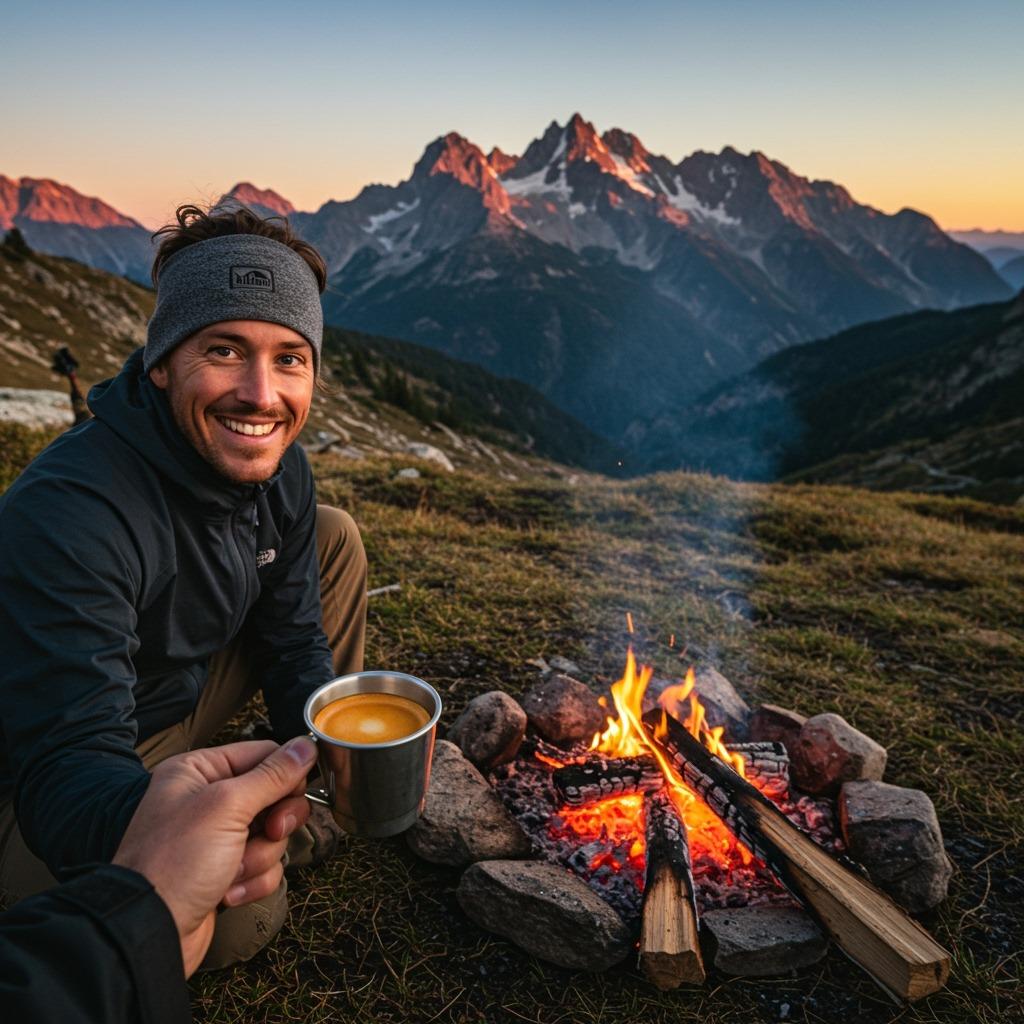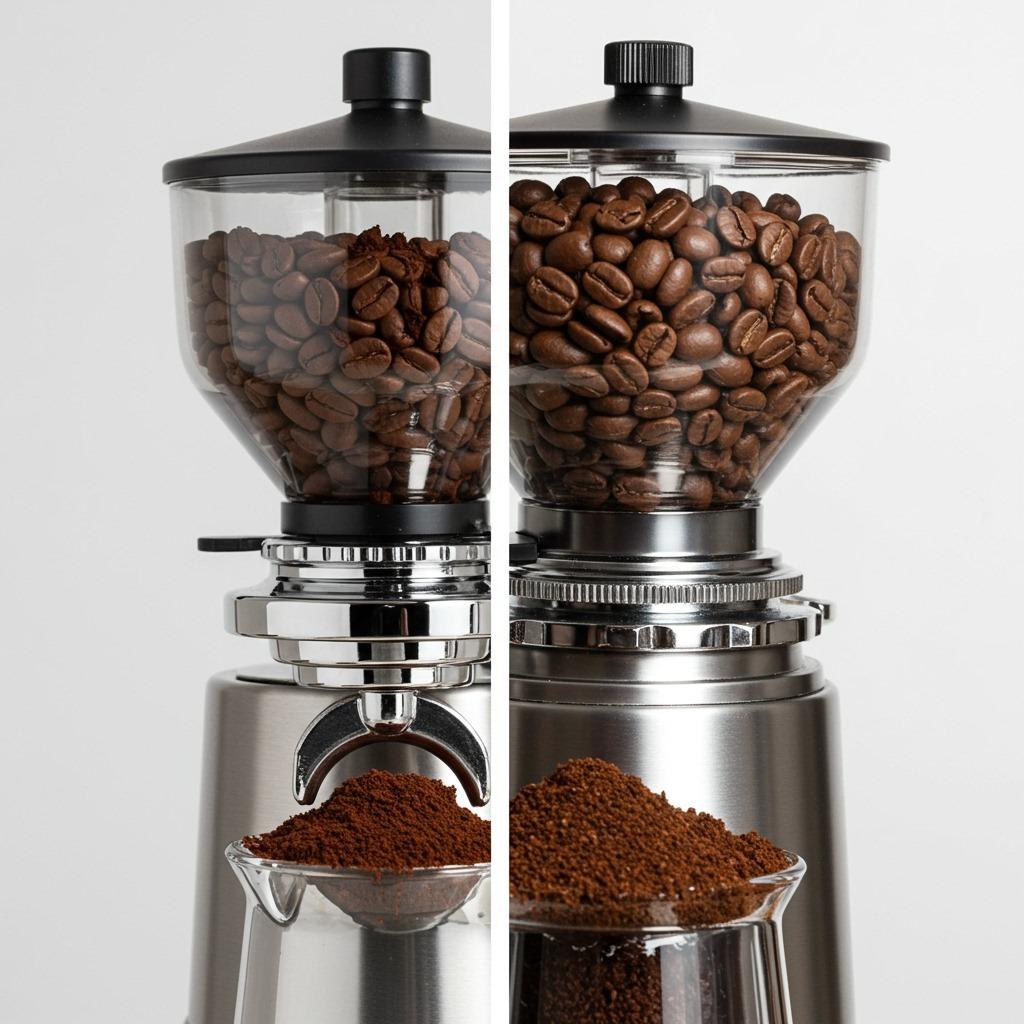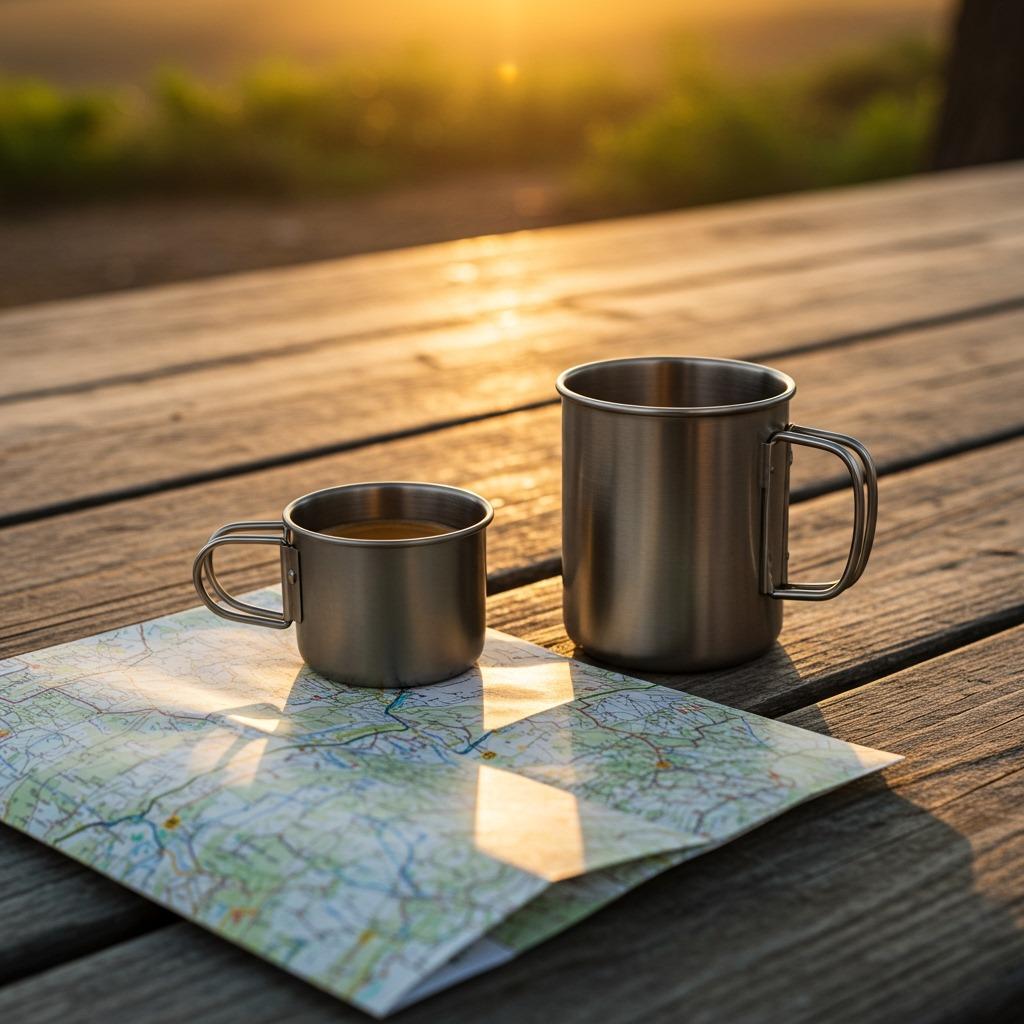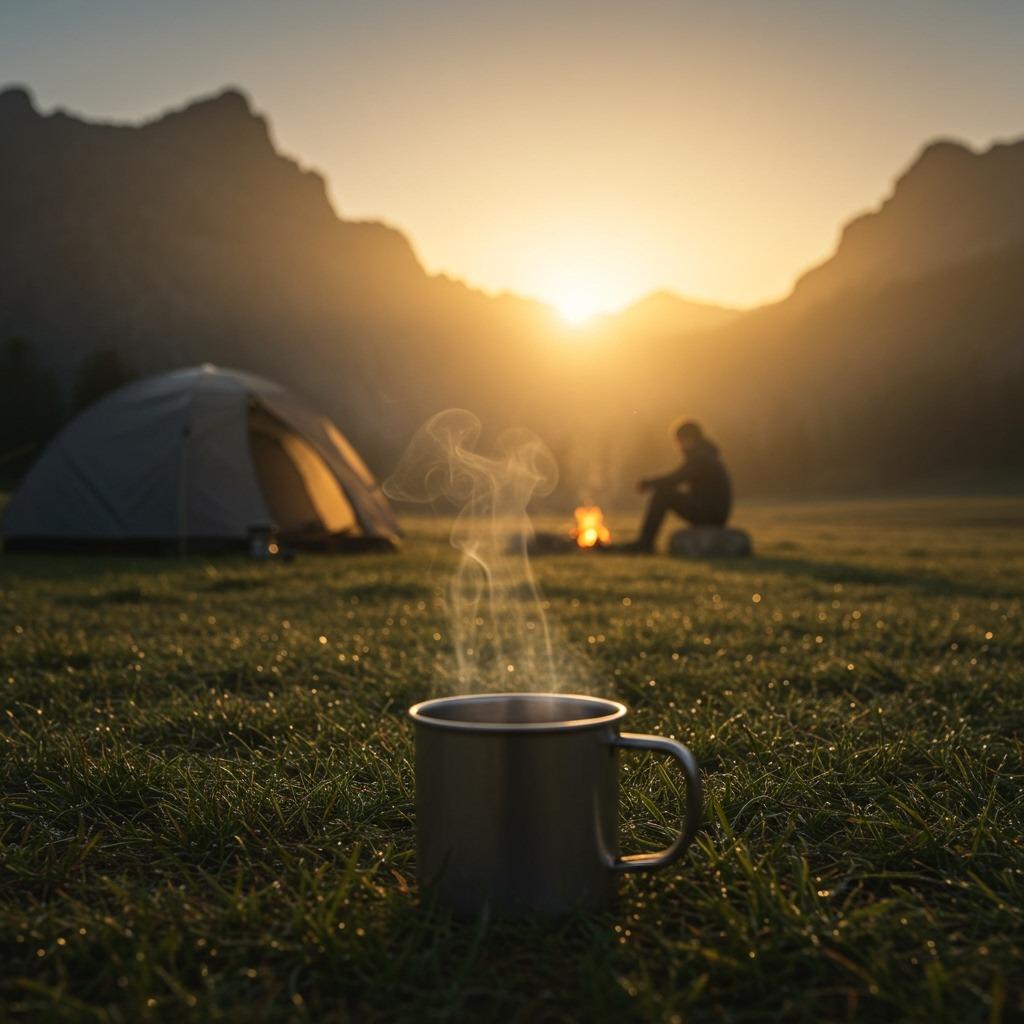As outdoor adventurers, we rely on caffeine to power sunrise summits and late-night campfire stories. Understanding the difference between espresso and regular coffee isn’t just academic — it can help you choose the right brew for your next backcountry adventure. If you’ve ever wondered about the perfect camp coffee setup, learning how to make cowboy coffee is a great starting point for any outdoor enthusiast.
A Campfire Confession About Coffee
Picture this: I’m sitting around a dying ember glow in the Colorado Rockies, nursing what I thought was the strongest camp coffee I’d ever brewed. My hiking buddy pulls out a tiny portable espresso maker and produces this dark, syrupy shot with a golden foam layer on top.
“That’s not coffee,” I said, pointing to his tiny cup.
“Actually,” he grinned, “this IS coffee. Just concentrated.”
That moment changed everything I thought I knew about caffeine and outdoor brewing.

What Actually Makes Espresso Different?
The biggest misconception? Espresso and regular coffee aren’t different types of beans. They’re the same coffee beans prepared in completely different ways.
The Pressure Game
Espresso is all about pressure — specifically 6 to 9 bars of pressure. That’s roughly nine times the atmospheric pressure at sea level. This intense pressure forces hot water through finely ground coffee in just 25-30 seconds, creating a concentrated shot.
Regular coffee, on the other hand, relies on gravity and time. Whether you’re using a French press, drip machine, or pour-over method, water slowly extracts flavors over 2-6 minutes.
Size Matters
- Espresso: Served in 1-2 oz shots
- Regular Coffee: Typically 6-8 oz cups or larger
This size difference isn’t just about tradition — it’s about intensity. Espresso packs all its flavor punch into a tiny serving, while regular coffee spreads that flavor across a much larger volume.
The Grind That Makes the Difference
Fine vs. Coarse
Espresso demands an extremely fine grind — think powdered sugar consistency. This fine grind is essential because the high-pressure brewing process happens so quickly. The water needs maximum surface area contact with the coffee to extract flavor in under 30 seconds.
Regular coffee uses medium to coarse grinds, more like sea salt or breadcrumbs. The slower brewing process allows for proper extraction without over-extracting bitter compounds.

For outdoor enthusiasts exploring primitive camping adventures, understanding these grinding differences helps you pack the right coffee prep tools.
Why You Can’t Just Use Any Grind
Try making espresso with coarse grounds, and you’ll get weak, sour-tasting coffee. Use fine espresso grounds in a French press and you’ll end up with bitter, over-extracted sludge. The grind size and brewing method work together like a perfectly balanced hiking pack — everything has its place.
Roast Levels: Dark vs. Light Traditions
Espresso’s Dark Side
Traditionally, espresso uses darker roasted beans. The dark roast helps balance the intense concentration and pressure extraction, preventing overly acidic or sour flavors. Dark roasts also produce better crema — that signature golden foam layer that tops a well-pulled espresso shot.
Coffee’s Flexibility
Regular coffee can handle any roast level. Light roasts highlight origin flavors and acidity. Medium roasts balance flavor and body. Dark roasts emphasize bold, smoky notes. This flexibility makes regular coffee perfect for outdoor brewing, where you might want different flavor profiles for different activities.
The Crema Factor
That golden-brown foam layer on top of espresso isn’t just for show — it’s crema, and it’s unique to espresso brewing. Crema forms when high-pressure brewing emulsifies coffee oils, creating a creamy texture that regular coffee simply can’t achieve.
No pressure brewing method = no crema. It’s that simple.
Caffeine Content: The Energy Breakdown
Per Ounce Power
- Espresso: ~63mg caffeine per 1 oz shot
- Regular Coffee: ~12mg caffeine per 1 oz
Espresso wins the concentration game hands down.
Per Serving Reality
- Espresso: ~63mg per single shot serving
- Regular Coffee: ~95mg per 8-oz cup
But when you consider actual serving sizes, regular coffee delivers more total caffeine. For trail energy, this means espresso gives you a quick, intense boost, while regular coffee provides longer-lasting fuel.

Equipment: What You Actually Need
Espresso Demands
Making real espresso requires specialized equipment capable of generating high pressure. This means espresso machines, whether manual, semi-automatic, or fully automatic. There are portable options for camping, but they’re typically heavier and more complex than regular coffee brewing gear.
Coffee’s Simplicity
Regular coffee can be made with simple, lightweight equipment perfect for outdoor adventures:
- French press
- Pour-over cone
- Drip machine
- Percolator
- Even just a pot and strainer for camping breakfast ideas that include cowboy-style brewing
Taste Profile Differences
Espresso Intensity
Espresso hits you with concentrated flavors — bold, sometimes bitter, with complex undertones compressed into a small volume. The high-pressure extraction pulls out oils and compounds that create a thick, almost syrupy texture.
Coffee Balance
Regular coffee offers a more balanced flavor profile. The slower extraction allows for nuanced taste development without overwhelming intensity. This makes it perfect for sipping around a morning campfire while planning the day’s adventures.
Outdoor Applications: When to Choose What
Espresso for Quick Energy
- Pre-dawn summit attempts
- Midday energy crashes
- After long hiking days, when you need immediate revival
- Sharing with multiple people (small servings go further)
Regular Coffee for Sustained Energy
- Leisurely morning camp routines
- All-day sipping during fishing or base camping
- Social moments around the fire
- When you want to savor the coffee experience
Learning how to stay warm while camping includes understanding how different caffeine delivery methods affect your body temperature regulation.
The Serving Culture
Espresso Tradition
Espresso is typically consumed quickly, often while standing. In Italy, many people drink their morning espresso shot in under two minutes at the bar. It’s fuel, not a leisurely beverage.
Coffee Ritual
Regular coffee encourages lingering — sitting with a book, chatting with friends, watching sunrise from your campsite. The larger serving size and gentler flavor profile make it perfect for extended outdoor moments.

Making Both Outdoors: Practical Tips
Portable Espresso Options
- Manual espresso makers (Wacaco, Flair)
- AeroPress (espresso-style brewing)
- Moka pots (stovetop espresso alternative)
Reliable Coffee Methods
- French press with coarse grounds
- Pour-over with medium grounds
- Cowboy coffee with any grounds
- Instant coffee for ultralight backpacking
Comparison at a Glance
| Feature | Espresso | Regular Coffee |
|---|---|---|
| Brewing Time | 25-30 seconds | 2-6 minutes |
| Pressure | 6-9 bars | Atmospheric |
| Grind Size | Extra fine | Medium to coarse |
| Serving Size | 1-2 oz | 6-12 oz |
| Crema | Yes | No |
| Caffeine per oz | ~63mg | ~12mg |
| Equipment Weight | Heavy/complex | Light/simple |
| Outdoor Practicality | Limited | Excellent |
The Bottom Line for Outdoor Enthusiasts
Both espresso and regular coffee have their place in outdoor adventures. Espresso offers concentrated energy and requires minimal drinking time — perfect when every minute of daylight counts. Regular coffee provides sustained energy and creates opportunities for camp socializing and relaxation.
Understanding these differences helps you pack the right coffee gear for your adventure style. Weekend car campers might enjoy the luxury of portable espresso equipment, while ultralight backpackers will appreciate the simplicity and versatility of regular coffee brewing methods.
For a comprehensive approach to outdoor meal planning that includes coffee considerations, explore our guide to easy camping meals for family adventures.
Advanced Coffee Knowledge for Trail Nerds
Water Temperature Differences
- Espresso: 190-196°F (lower temperature compensates for pressure)
- Regular Coffee: 195-205°F (higher temperature needed for slower extraction)
Extraction Science
Espresso achieves 15-20% extraction in 30 seconds through pressure. Regular coffee reaches 18-22% extraction over several minutes through time and temperature. Both methods aim for optimal flavor extraction while avoiding over-extraction that creates bitterness.
Bean Origin Considerations
Single-origin beans often work better in regular coffee brewing, where their unique characteristics can shine. Espresso blends typically combine beans from multiple origins to create balanced flavor profiles that work well under high-pressure extraction.
Learn more about coffee science and brewing techniques from the Coffee Research Institute.
Frequently Asked Questions
Is espresso just stronger coffee?
Espresso isn’t simply “stronger” coffee — it’s more concentrated. The brewing method, grind size, and pressure create a fundamentally different beverage with unique texture, flavor, and caffeine concentration per ounce.
Can I make espresso without a machine?
True espresso requires high pressure that only machines can generate. However, you can make espresso-style coffee using AeroPress, moka pots, or manual espresso makers that create similar concentration and intensity.
Which has more caffeine: espresso or coffee?
Per serving, regular coffee typically contains more total caffeine (95mg vs 63mg). However, espresso has a much higher caffeine concentration per ounce (63mg vs 12mg).
Why is my espresso sour?
Sour espresso usually indicates under-extraction caused by too coarse water, water that is too cool, or an extraction time that is too short. Try a finer grind or slightly hotter water.
Can I use regular coffee beans for espresso?
Yes, you can use any coffee beans for espresso, but the grind must be much finer, and darker roasts traditionally work better for espresso brewing methods.
Is espresso harder to make than regular coffee?
Espresso requires more precise technique, timing, and specialized equipment. Regular coffee is much more forgiving and works well with simple outdoor brewing methods.
Why does espresso taste different from strong regular coffee?
The high-pressure brewing extracts different compounds and creates emulsified oils that regular brewing methods can’t achieve. This creates espresso’s unique texture, crema, and concentrated flavor profile.
Can I add milk to espresso?
Absolutely! Espresso mixed with steamed milk creates lattes, cappuccinos, and other popular coffee drinks. Many people prefer espresso-based drinks over straight espresso shots.
Whether you’re team espresso or team regular coffee, both have earned their place in outdoor culture. The key is matching your brewing method to your adventure style and energy needs. Happy trails, and may your coffee always be strong enough to power your next summit!
